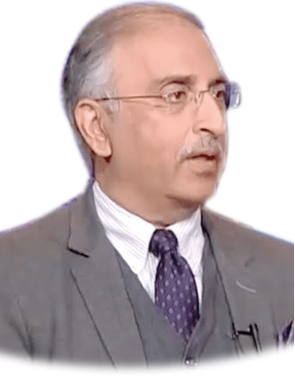Food inflation has a disproportionate impact on the poor
Inflation erodes purchasing power. Inflation erodes the value of cash. Inflation is a hidden tax. Inflation is your wallet’s worst foe. Food inflation increases poverty. Inflation unequally affects the population.
The poorer one is the higher is the percentage of income spent on food. The poorer you are the worse off you are. Inflation means uncertainty-and uncertainty is the worst enemy of business.
The global average rate of inflation is 3.2 percent. The rate of inflation in Pakistan is 9 percent; 200 percent higher than the global average. In the United States, food prices are 4.6 percent higher than a year ago.
In Pakistan, the Sensitive Price Index, comprising 51 essential items collected by the Pakistan Bureau of Statistics (PBS) from 50 markets in 17 cities, stands at 15.21 percent; 200 percent higher than the same in the US.
The average rate of inflation in Afghanistan, Bangladesh, India, Maldives, Nepal and Sri Lanka is 4 percent. The rate of inflation in Pakistan is 9 percent; 125 percent higher than the average in South Asia.
Over the past three years, the price of flour has moved from Rs35 per kilogram to Rs75 per kilogram, up 114 percent. Never ever in Pakistan’s 70-year economic history has the price of flour gone up by 114 percent
over a three-year period. Over the past three years, the price of sugar has moved from Rs55 per kilogram to Rs150 per kilogram, up 175 percent.
Never ever in Pakistan’s 70-year economic history has the price of sugar gone up by 175 percent over a three-year period. Over the past three years, the cost of electricity has moved from Rs11 per unit to Rs22 per unit, up 100 percent.
Never ever in Pakistan’s 70-year economic history has the cost of electricity gone up by 100 percent over a three-year period.
The average per capita income in Pakistan is Rs16,000 per month. Flour at Rs75 per kilogram, sugar at Rs150 per kilogram, eggs at Rs200 a dozen, tomatoes at Rs180 a kilogram and cooking oil at Rs400 per liter. How on earth can an average Pakistani making Rs16,000 a month make his or her two ends meet?
The average per capita income in Pakistan is $1,193 a year. The average per capita income in the US is $66,000. Petrol in Pakistan sells for Rs146 a liter and in the US sells for $0.89 a liter or the equivalent of Rs151 a liter.
Would you rather earn $66,000 a year and buy petrol for $0.89 a liter or earn a paltry $1,193 a year and buy petrol at Rs146 a liter?On November 3, Prime Minister Imran Khan announced a Rs120 billion ‘relief package’.
On November 5, the price of petrol and diesel was jacked up by Rs8 a liter-an additional burden of Rs160 billion. On November 9, the price of electricity was increased by Rs2.52 a unit-an additional burden of Rs252 billion. Giveth: Rs120 billion. Taken: Rs412 billion.
The average per capita income in Pakistan is $1,193 a year. The average per capita income in the US is $66,000.
An average American spends 6.5 percent of his household income on food while in Pakistan the average Pakistani spends 41.4 percent of his household budget on food. The poorer one is the higher is the percentage of income spent on food.
Conclusion: Food inflation has a disproportionate impact on the poor-the poorer you are the more you suffer.
In 1960, GDP per capita in Pakistan was $83. For the following 58 years GDP per capita grew-almost constantly-to reach $1,482 by 2018. Since 2018, GDP per capita in Pakistan has been falling-fell to $1,193 by 2020.
The current inflationary spiral, therefore, has been a double-edged sword; rising prices and a falling income and this is something that Pakistanis have not experienced in the last 60 years.
Inflation impacts the cost of living. Inflation impacts the cost of doing business. Inflation impacts individuals as well as companies. Inflation impacts every facet of the economy. Someone wise once said, “Inflation is taxation without legislation”.









